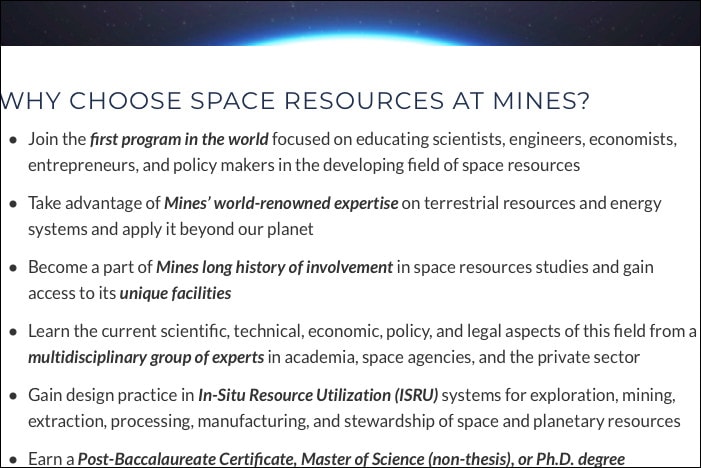Colorado School of Mines opens up a graduate program in Space Resources, in three options: a certificate, an MS, and a PhD. Normally I would be highly skeptical, but this university has a solid reputation for long-term value in its degrees.
More: https://space.mines.edu


 LinkBack URL
LinkBack URL About LinkBacks
About LinkBacks





 Reply With Quote
Reply With Quote


Bookmarks